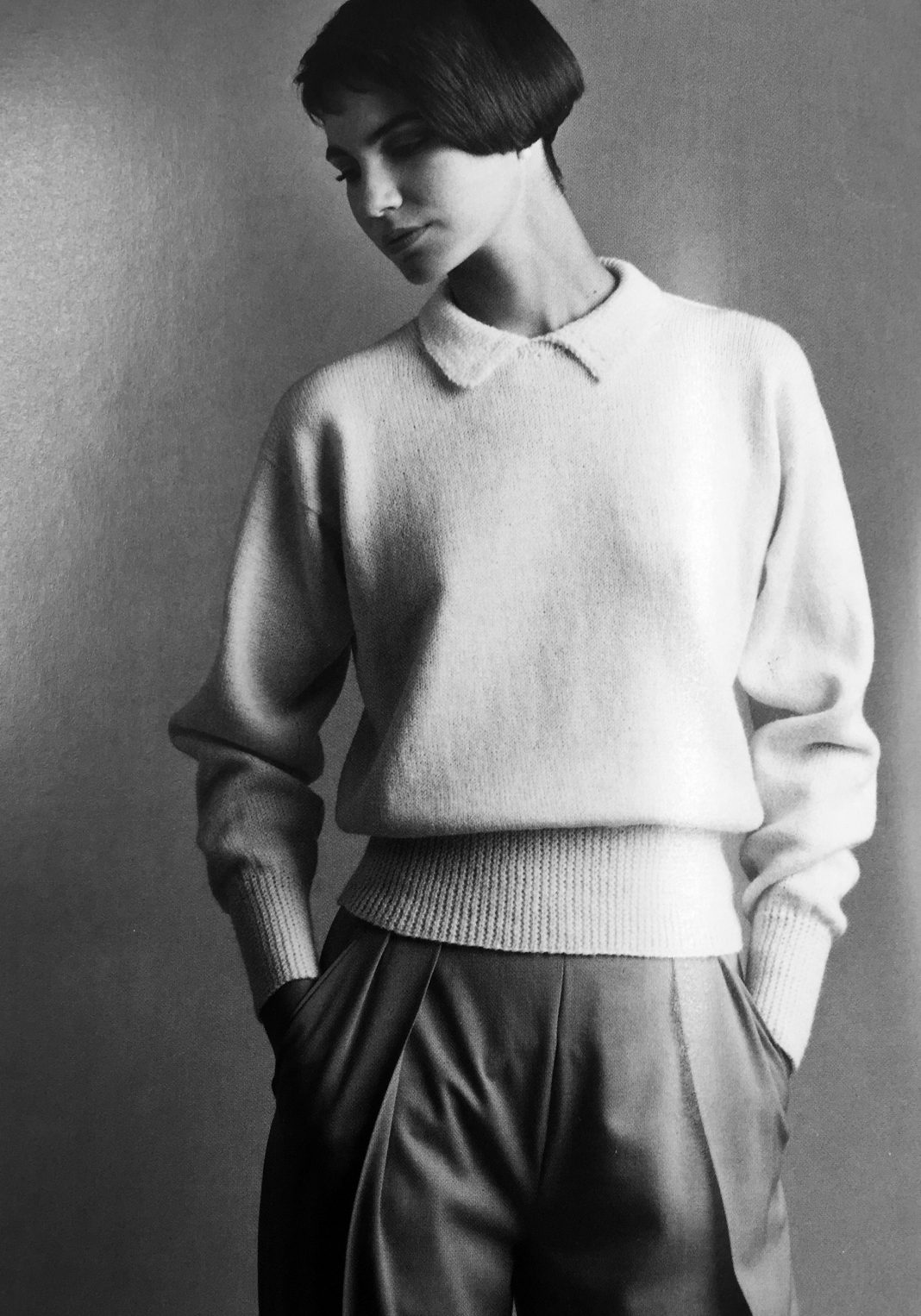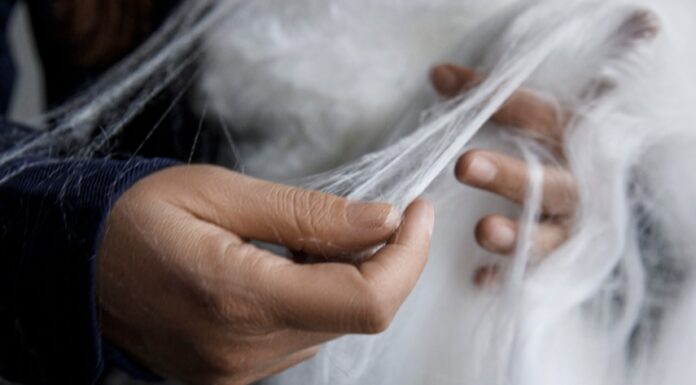Last week, we travelled to Warwickshire, England to meet British fashion designer Marion Foale, co-founder of the 1960’s Carnaby Street boutique Foale & Tuffin turned knitwear designer.
Having studied at art school in Walthamstow, London where she had initially wanted to pursue her aspirations of becoming a painter, Marion chose to study fashion design, moving on to continue her studies at the Royal College of Art, where she went with her friend from art school, Sally Tuffin. Inspired by the creativity and high-fashion of Parisian design houses such as Givenchy and Balenciaga at the time, and following a talk given by Mary Quant’s husband and business partner, Alexander Plunket Quant in their final term at the RCA, Marion along with Sally decided to shun opportunities with British retailers of the moment such as Polly Peck and Susan Small and go it alone. Marion recalls ‘Of course, we knew nothing about business, but we just went ahead and did it. [I left the Royal College] and that was it, we were in the middle of fashion at a very opportune time, the 1960s’
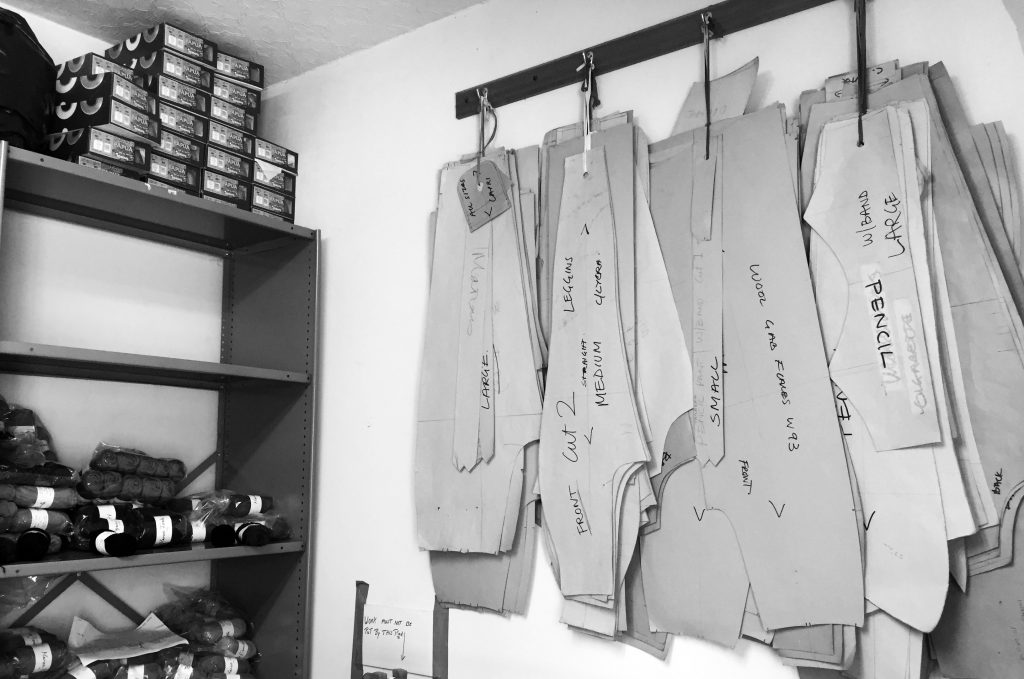
Showing their designes to then-buyer of 21 Shop in Woollands department store in Knightsbridge, Vanessa Denza, who displayed two of their cut and sew pieces in the influential shop window, the emerging young photographer David Bailey photographed the pieces, where then the images appeared in Vogue. This was 1962. Following a steeply growing demand for their modern tailored pieces, Marion and Sally together opened their eponymous shop, Foale & Tuffin in 1963. Why Carnaby Street? Marion told us ‘Carnaby Street had the cheapest rent in central London at the time. There was a dairy, a saddle maker, there were prostitutes. We were the first ladies shop on Carnaby Street.’ Marion and Sally ran their shop for ten years. Having both married and started families, Sally relocated to Somerset and Marion moved to Warwickshire, where she is still based.
While Foale & Tuffin specialised in cut and sew tailoring, we asked Marion how she re-routed into knitwear. ‘I was living the good life, eating vegetarian food, growing organic vegetables, raising a family. After some time, I needed to look at doing some work again. I knew the pitfalls of CMT (cut, make and trim) It was then I decided to learn to knit.’ Marion, like most girls at the time, had been taught to knit at school and by her parents. Though she saw an un-met demand for classic knitwear with a clean and modern twist. ‘I had this light-bulb moment. I love tailored jackets, I love tailoring, I like shape. Knitwear [at the time] was two-dimensional, let’s make it three-dimensional.’ Marion would work on the stand, applying her knowledge of tailoring to create toiles for her knit pieces. She would often start with shirt shapes, applying new collar designs.
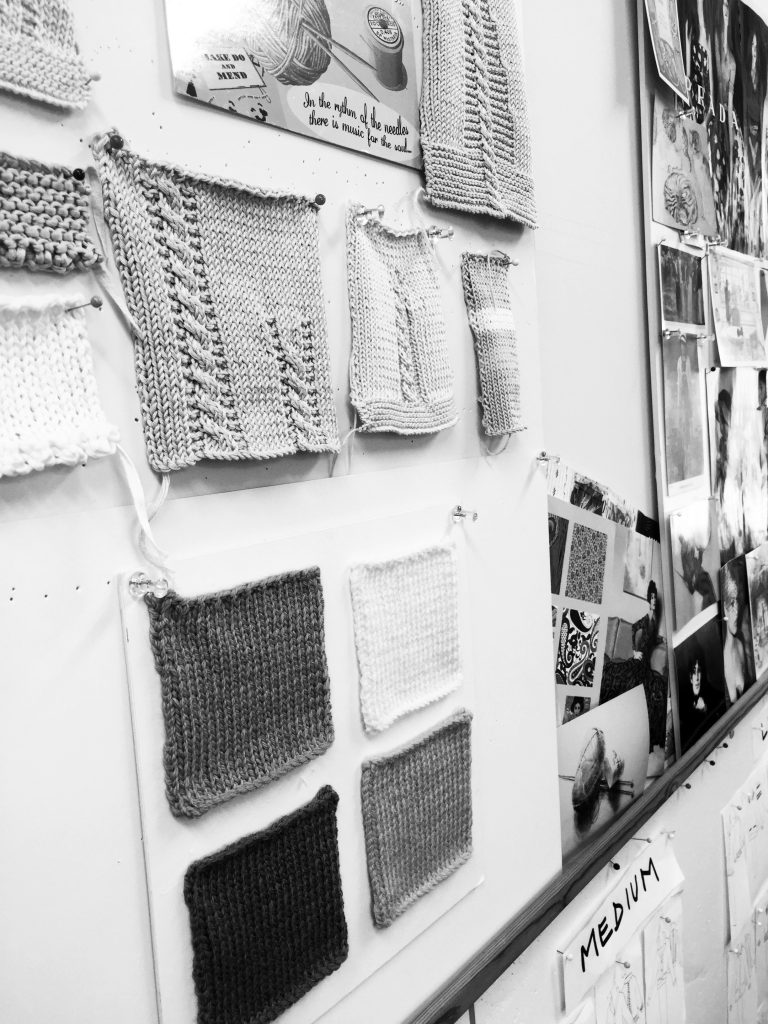
At the time, Marion showed her knitwear designs to friend, and fellow British fashion designer Paul Smith, who felt that they were a little too unadorned for the time, too plain. At the time (late 1970s/early 1980s) patterned fairisles and embellishment were highly popular. Choosing to overlook this, Marion showed her designs the then-Fashion Editor of the Sunday Times, Meriel McCooey, who loved the pieces and published her modern take on a basic sweater block with a free pattern offer in the Sunday Times colour supplement of February 1981. Following this, the Sunday Times were inundated with requests for more of Foale’s designs. Marion recalls that they even had to take on more staff to handle the demand following the article.
Shortly after, Marion sold her first designs to Margaret Howell in 1982. ‘We had the same sort of style [in our collections] Classic with a twist, to be worn in ordinary life.’ Marion has continued producing hand-knitted pieces for Margaret Howell, with her latest pieces being a classic knit waistcoat and garter stitch crewneck in 3ply wool. As well as Margaret Howell, Marion has sold designs to Whistles (before its partial sale to Jane Sheperdson in 2008) and LK Bennett, of whom founder Linda Bennett (who was recently reported to have re-brought and returned to her eponymous brand) stocks Foale’s knitwear in her contemporary boutique Atelier 75, positioned on New Cavendish Street, London. It is clear from Linda Bennett and Jo Ogden’s beautifully and succinctly curated pieces, that Marion’s clean and modern tailored knitwear has transcended time, juxtopositioned with contemporary British accessories brand Ally Capellino and Belgian clothing designer Sofie D’Hoore.
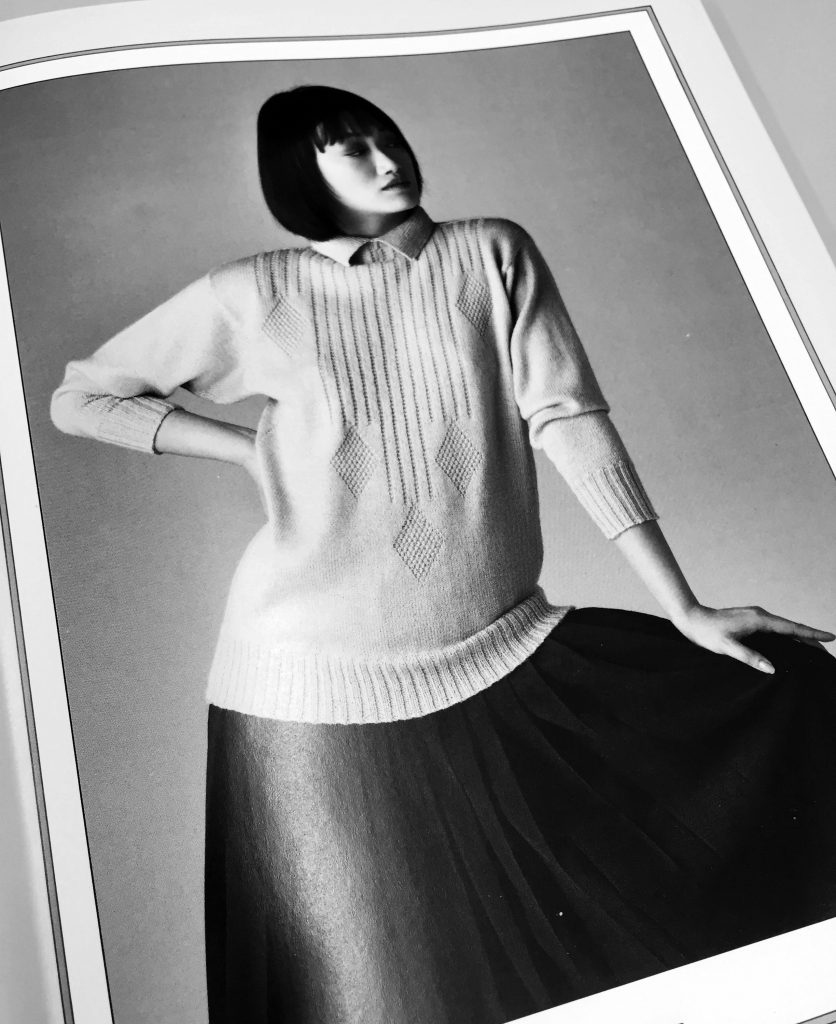
in 1985, Marion’s book ‘Classic Knitwear’ was published with a range of knitting patterns from her collections. The book continues to be a key resource of classic yet contemporary knitwear patterns for the industry, with minimally striking black and white portrait photography. All of Foale’s knitwear is hand-knitted in the highest quality yarns, such as cotton from Swiss spinner, Lang, or her custom-made Falkland wool, spun and dyed in Holmfirth, UK.
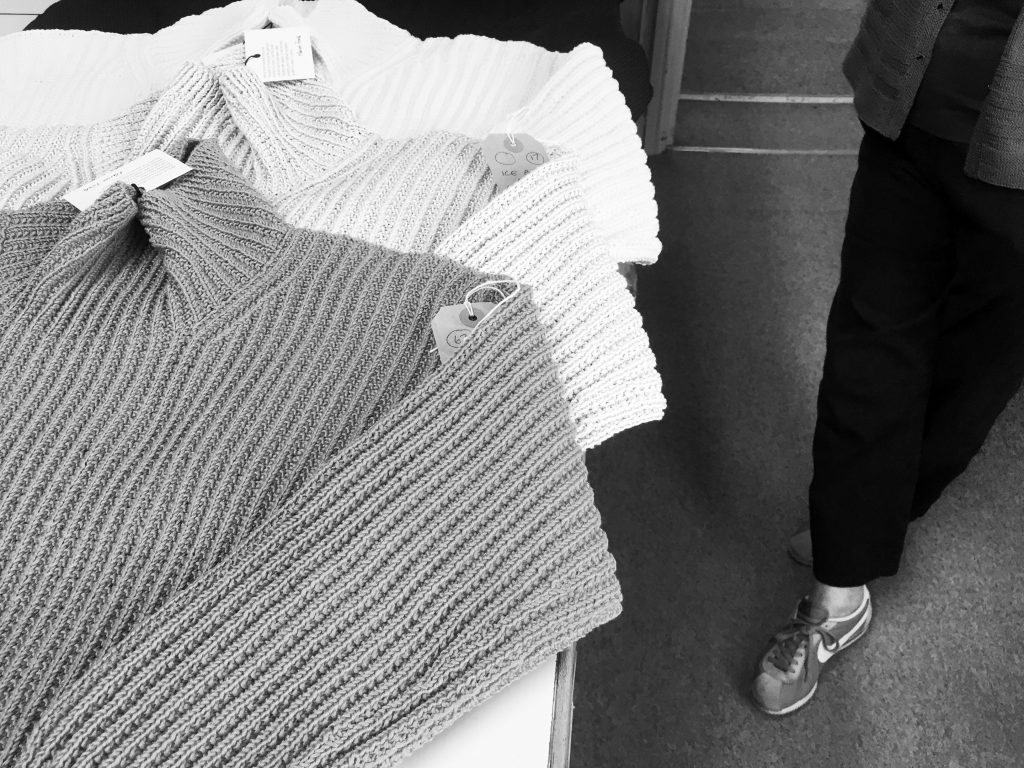
Marion has around 250 hand-knitters of whom she keeps detailed information on their knitting style – how long or wide they to knit, how loose or tight their knitting tension tends to be, whether they knit slowly or quickly. ‘One person might knit the same pattern twice, but the two garments could be different, depending on their mood, whether they are feeling well or not. It is the human element.’ Marion explains that these skills are on the edge of being lost. ‘They are getting old, they are dying out’. It is a harsh reality. ‘People now aren’t taught to knit like we were. We were all taught to knit at school.’ Marion’s assistant Jane adds ‘ We used to sit at home and knit, as a family. But people [and I assume here she is referring to women] work now. They have the money, so they buy, not make.’ Jane continues ‘They [people now] don’t have the time like we do, or did’ to which Marion agrees. Interestingly, time does not change, but only the pace of life. We live a faster pace of life, to which hand-knitting cannot be sped-up to match. It is slow.
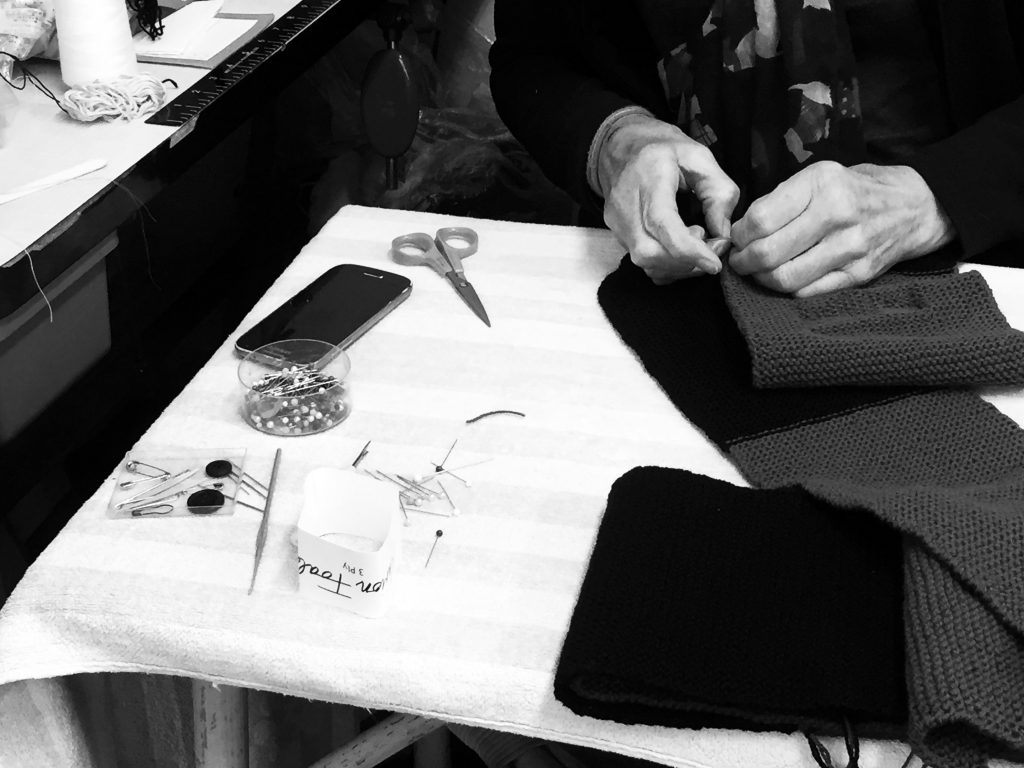
So what is next for Marion Foale? ‘I am creating a small knitwear range. But these are not new designs. I’ve got all these patterns, hundreds. What would I do with them? Would I burn them? There’s a lot of work that has gone into them, lots of mathematics. I would like to sell them.’ At her peak Marion was creating two 24-piece collections a year, each of which would take around 14 weeks from start to finish. At 82, Marion explains that she has re-discovered her love for painting. We talked about how we make excuses not to indulge our creative outlets, because of work, because of life, but how important it is to make time as a creative. ‘It is my release’ she explains.

Marion is continuing to work with Margaret Howell and Linda Bennett with her upcoming collection.
Photo credit: Charlotte Cameron
Cover image taken from Marion Foale’s book ‘Classic Knitwear’

Subscribe To Our Newsletter
Join our mailing list to receive the latest news and updates from our team.


